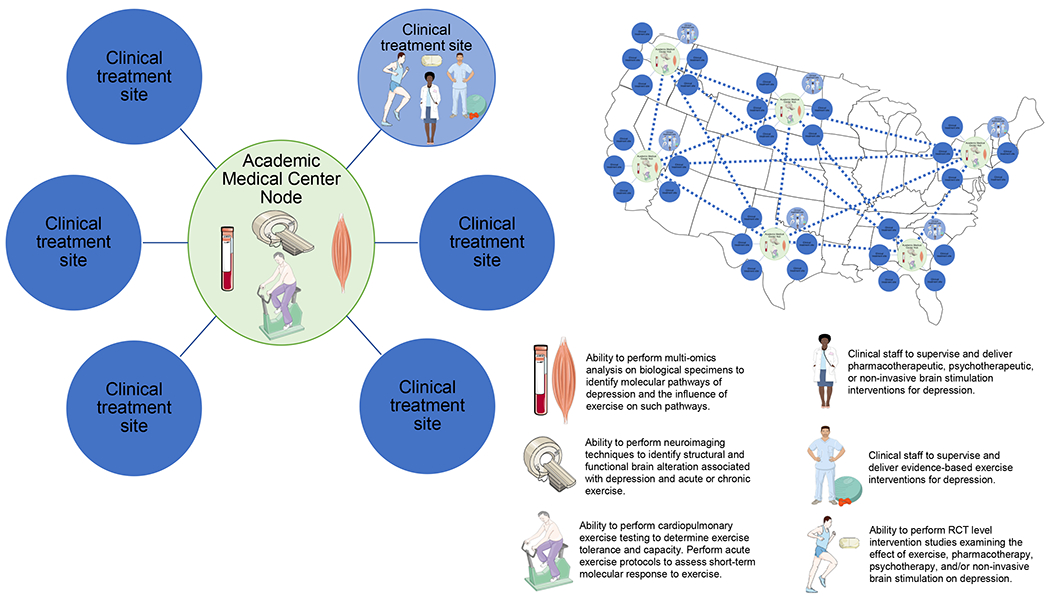Figure 2.

Proposed solution to advance the state of the art of the mechanistic understanding of exercise treatment for depression.
This proposed next generation research network would utilize the National Institute of Drug Abuse Clinical Trials Network (CTN) and the Molecular Transducers of Physical Activity Consortium (MoTrPAC) as models to advance the science of depression and the interface of exercise and depression. Each node will be an academic medical center with the capability of providing support to obtain, store and analyze biospecimens (i.e., ‘omics analyses). Outlying each node will be clinical treatment sites which will deliver singular exercise treatments (AEx, REx), combination exercise treatments (AEx and REx), or mixed treatments (exercise with nutritional counseling, psychotherapy, pharmacotherapy, or non-invasive brain stimulation). This model provides the infrastructure needed to perform large scale clinical trials while obtaining the biological data needed to elucidate the molecular mechanisms underlying depression, exercise, and the treatment response to exercise-based interventions. Ultimately this model can be leveraged to explore other mental health liabilities, develop novel treatments for such liabilities, and reduce the overall burden of mental health liabilities. Portion of illustration created with Servier Medical Art (smart.servier.com).
